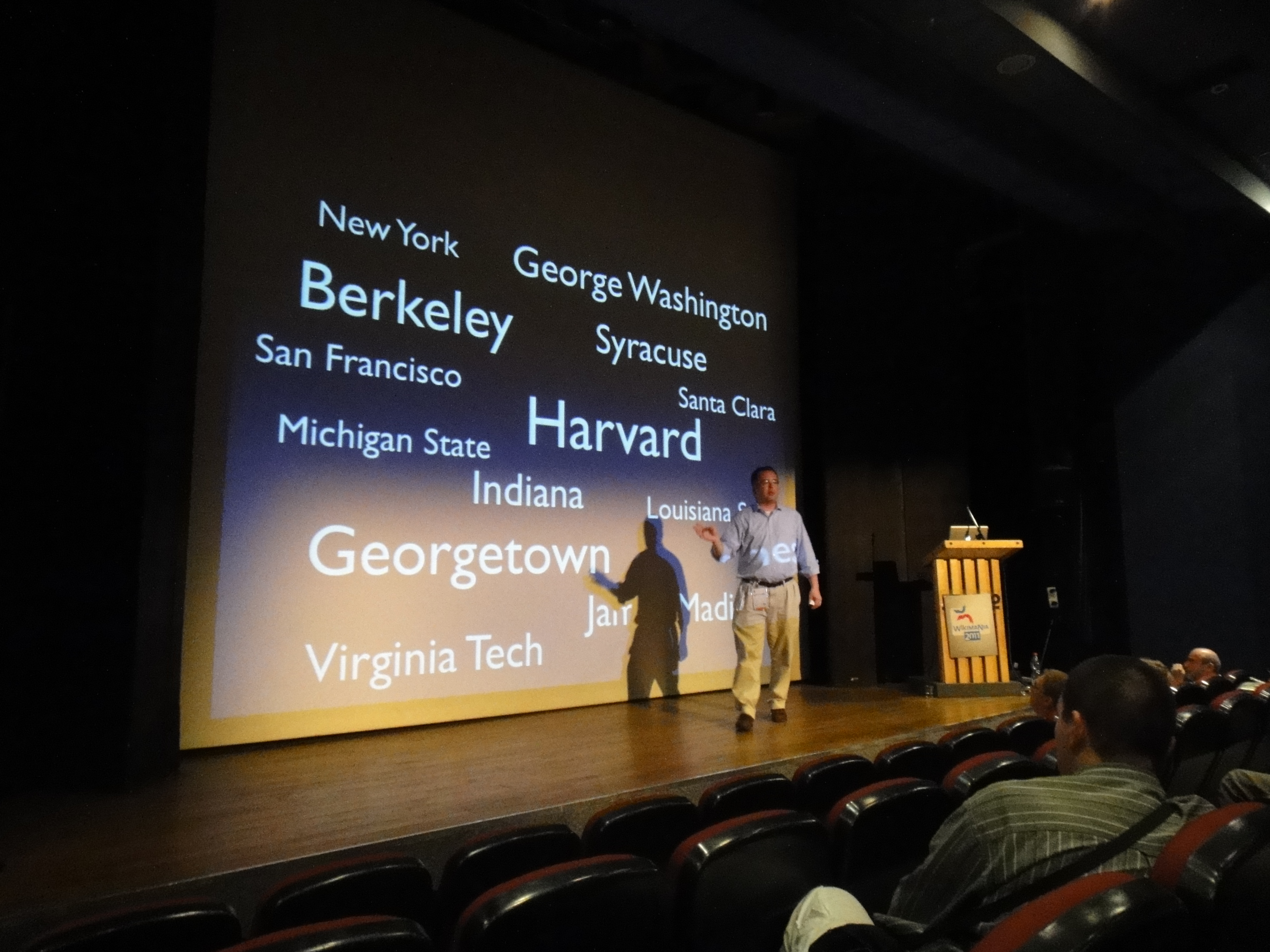Advanced Presentation Techniques Innovation
COURTESY :- vrindawan.in
Wikipedia
Presentation technology are tools used to assist in conveying information during a presentation.
When a speaker is verbally addressing an audience it is often necessary to use supplementary equipment and media to clarify the point. If the audience is large or the speaker is soft-spoken, a public address system may be employed.
At a basic level, visual content can be provided by drawing directly onto a blackboard or whiteboard during the presentation. At a more advanced level, flip charts, slide projectors, and overhead projectors are more suitable for displaying prepared content. The use of prepared material often results in a neater, more accessible, and better conveyed presentation.

Laser pointers or even a simple stick are often used to highlight a particular point of interest within a slide or image. Many manufacturers produce devices that provide remote control over electrical presentation equipment, thus allowing the speaker to move around the stage freely and to activate systems when they are required.
Occasionally still images do not provide enough information to convey the message clearly. For example, the presenter may attempt to describe a complex mechanical movement, in which case animation or video may provide the clearest method of delivery.
Software presentation programs combined with digital projectors are frequently used because they provide a visually pleasing presentation and combine multiple media into a single device.
Presentations are often used in the business world where careful attention is paid to the design of the presentation.
A presentation conveys information from a speaker to an audience. Presentations are typically demonstrations, introduction, lecture, or speech meant to inform, persuade, inspire, motivate, build goodwill, or present a new idea/product. Presentations usually require preparation, organization, event planning, writing, use of visual aids, dealing with stress, and answering questions.“The key elements of a presentation consists of presenter, audience, message, reaction and method to deliver speech for organizational success in an effective manner.” Presentations are widely used in tertiary work settings such as accountants giving a detailed report of a company’s financials or an entrepreneur pitching their venture idea to investors. The term can also be used for a formal or ritualized introduction or offering, as with the presentation of a debutante. Presentations in certain formats are also known as keynote address. Interactive presentations, in which the audience is involved, are also represented more and more frequently. Instead of a monologue, this creates a dialogue between the speaker and the audience. The advantages of an interactive presentation is for example, that it attracts more attention from the audience and that the interaction creates a sense of community.
A presentation program is commonly used to generate the presentation content, some of which also allow presentations to be developed collaboratively, e.g. using the Internet by geographically disparate collaborators. Presentation viewers can be used to combine content from different sources into one presentation. Some of the popular presentation products used across the globe are offered by Apple, Google and Microsoft.
Microsoft PowerPoint and Google Slides are effective tools to develop slides, though Google Slides allows groups to work together using Google Drive to update each account as it is edited. Content such as text, images, links, and effects are added into each of the presentation programs to deliver useful, consolidated information to a group. Visual elements add to the effectiveness of a presentation and help emphasize the key points being made through the use of type, color, images/videos, graphs, layout, and transitions.
One common means to help one convey information and the audience stay on track is through the incorporation of text in a legible font size and type. According to the article “Prepare and Deliver an Effective Presentation”, effective presentations typically use serif fonts (e.g. Times New Roman, Garamond, Baskerville, etc.) for the smaller text and sans serif fonts (e.g. Helvetica, Futura, Arial, etc.) for headings and larger text. The typefaces are used along with type size to improve readability for the audience. A combination of these typefaces can also be used to create emphasis. The majority of the fonts within a presentation are kept simple to aid in readability. Font styles, like bold, italic, and underline, are used to highlight important points.
It is possible to emphasize text and still maintain its readability by using contrasting colors. For example, black words on a white background emphasize the text being displayed but still helps maintain its readability. Text that contrasts with the background of a slide also enhances visibility. Readability and visibility enhance a presentation experience, which contributes to the effectiveness of it. Certain colors are also associated with specific emotions and the proper application of these colors adds to the effectiveness of a presentation through the creation of an immersive experience for an audience.
Large images relevant to the presentation attract an audience’s attention which in turn can clarify the topics within the presentation. Using pictures sparingly helps support other presentation elements (e.g. text). Short videos are used to help the presenter reinforce their message to the audience. With the additional reinforcement that images and videos offer, the effectiveness of a presentation is further maximized.
There lacks a comprehensive list of criteria common among research studies or educational institutions in a typical presentation rubric used to assess presentations. Nevertheless, De Grez et al., in consultation with experienced higher education teachers, developed a rubric composed of nine evaluative criteria, of which five dealt with one’s manner of delivery (interaction with audience, enthusiasm, eye contact, vocal delivery, and body language), three were content related (structure, quality of introduction, and conclusion), and one evaluated general professionalism.
